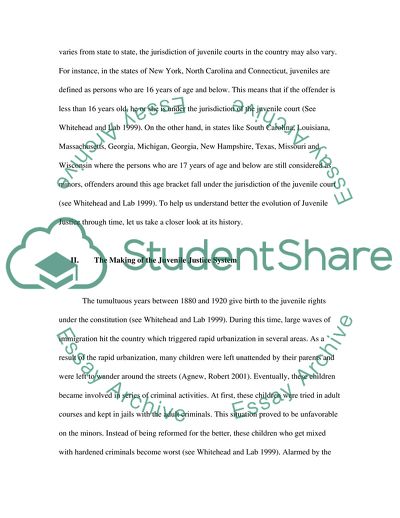Cite this document
(History of Juveniles' Constitutional Rights Report Example | Topics and Well Written Essays - 1250 words, n.d.)
History of Juveniles' Constitutional Rights Report Example | Topics and Well Written Essays - 1250 words. https://studentshare.org/law/1718785-history-of-juveniles-constitutional-rights
History of Juveniles' Constitutional Rights Report Example | Topics and Well Written Essays - 1250 words. https://studentshare.org/law/1718785-history-of-juveniles-constitutional-rights
(History of Juveniles' Constitutional Rights Report Example | Topics and Well Written Essays - 1250 Words)
History of Juveniles' Constitutional Rights Report Example | Topics and Well Written Essays - 1250 Words. https://studentshare.org/law/1718785-history-of-juveniles-constitutional-rights.
History of Juveniles' Constitutional Rights Report Example | Topics and Well Written Essays - 1250 Words. https://studentshare.org/law/1718785-history-of-juveniles-constitutional-rights.
“History of Juveniles' Constitutional Rights Report Example | Topics and Well Written Essays - 1250 Words”. https://studentshare.org/law/1718785-history-of-juveniles-constitutional-rights.


